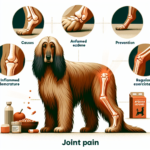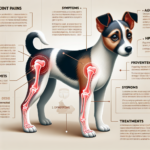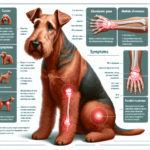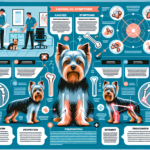Siberian Husky Joint Pain: Causes, Symptoms, Prevention, and Treatment
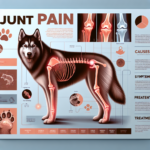
Introduction
The Siberian Husky is a medium-sized working dog breed known for its striking appearance, high energy levels, and friendly demeanor. Originating from Northeast Asia, these dogs were bred by the Chukchi people for sled-pulling and companionship. With their thick double coat, erect triangular ears, and distinctive facial markings, Siberian Huskies are not only beautiful but also highly functional in cold climates.
While Siberian Huskies are generally healthy dogs, they are prone to certain health issues, including eye disorders, skin conditions, and joint problems. Joint pain is a significant concern for this breed due to their active lifestyle and genetic predispositions. Maintaining joint health is crucial for Siberian Huskies to ensure they can lead active, pain-free lives.
Breed-Specific Joint Pain Risks
Genetic Predisposition
Siberian Huskies are genetically predisposed to several joint-related issues, including hip dysplasia, elbow dysplasia, and arthritis. Hip dysplasia is a condition where the hip joint does not fit properly into the hip socket, leading to pain and mobility issues. Elbow dysplasia involves abnormal development of the elbow joint, causing lameness and discomfort. Arthritis, a degenerative joint disease, can also affect Siberian Huskies, particularly as they age.
Age-Related Risks
As Siberian Huskies age, the risk of developing joint pain increases. Typically, signs of joint issues may start to appear in middle age, around 5 to 7 years old. However, some dogs may show symptoms earlier or later, depending on their genetic makeup and lifestyle. Regular veterinary check-ups are essential to monitor joint health as the dog ages.
Activity Level and Joint Stress
Siberian Huskies are known for their high energy levels and need for regular exercise. While their active lifestyle is beneficial for overall health, it can also contribute to joint stress. Activities such as running, jumping, and pulling can put significant strain on their joints, potentially leading to wear and tear over time. Owners should be mindful of balancing exercise with rest to prevent overexertion.
Common Symptoms of Joint Pain in Siberian Huskies
General Symptoms
- Limping or favoring one leg
- Stiffness, especially after rest
- Reluctance to move or climb stairs
- Decreased activity or playfulness
- Swelling around the joints
- Whining or showing signs of discomfort when touched
Breed-Specific Symptoms
In Siberian Huskies, joint pain may manifest as a reluctance to engage in activities they once enjoyed, such as running or pulling. They may also show a noticeable decrease in endurance during exercise. Given their typically high energy levels, any significant change in activity should be taken seriously.
When to Consult a Vet
If you notice any of the above symptoms in your Siberian Husky, it is crucial to consult a veterinarian. Early diagnosis and treatment can significantly improve the quality of life for dogs suffering from joint pain. Regular veterinary check-ups can also help catch joint issues before they become severe.
Preventive Measures for Joint Health
Exercise Recommendations
Regular, moderate exercise is essential for maintaining joint health in Siberian Huskies. Activities such as walking, swimming, and controlled running can help keep their joints flexible and muscles strong. Avoid high-impact activities like jumping or abrupt changes in direction, which can strain the joints.
Dietary Suggestions
A balanced diet rich in essential nutrients can support joint health. Consider incorporating foods or supplements that contain glucosamine, chondroitin, and omega-3 fatty acids, which are known to promote joint health. Always consult your veterinarian before adding supplements to your dog’s diet.
Weight Management
Maintaining a healthy weight is crucial for reducing joint stress. Overweight dogs are more prone to joint issues due to the extra load on their joints. Monitor your Siberian Husky’s weight and adjust their diet and exercise routine as needed to keep them at an optimal weight.
Early Screening and Monitoring
Regular veterinary check-ups and early screening for joint issues can help catch problems before they become severe. X-rays and other diagnostic tools can identify joint abnormalities early, allowing for timely intervention. Discuss with your vet about the best screening schedule for your Siberian Husky.
Treatment Options for Joint Pain
Non-Surgical Treatments
Non-surgical treatments for joint pain in Siberian Huskies include medications, physical therapy, and lifestyle adjustments. Anti-inflammatory drugs and pain relievers can help manage symptoms, while physical therapy can improve mobility and strengthen muscles. Lifestyle changes, such as providing a comfortable bed and avoiding slippery surfaces, can also make a significant difference.
Surgical Options
In severe cases, surgical intervention may be necessary. Common surgeries for joint issues include hip replacement, arthroscopy, and joint fusion. These procedures can provide significant relief and improve the quality of life for dogs with severe joint pain. Consult with a veterinary orthopedic specialist to determine the best surgical option for your dog.
Alternative Therapies
Alternative treatments such as acupuncture, hydrotherapy, and massage can also benefit Siberian Huskies with joint pain. Acupuncture can help reduce pain and inflammation, while hydrotherapy provides low-impact exercise that strengthens muscles without stressing the joints. Massage can improve circulation and reduce muscle tension.
Lifestyle and Management Tips
Daily Care Routine
A daily care routine for a Siberian Husky with joint pain should include gentle exercise, a balanced diet, and regular monitoring of symptoms. Short, frequent walks are better than long, strenuous ones. Ensure your dog has a comfortable place to rest and avoid activities that may strain their joints.
Modifying the Home Environment
Making your home more comfortable for a dog with joint pain can significantly improve their quality of life. Consider adding ramps to help them navigate stairs, providing orthopedic beds for better support, and using non-slip mats to prevent falls. Ensure their food and water bowls are at a comfortable height to reduce strain on their neck and joints.
Long-Term Management
Long-term management of joint pain involves regular veterinary check-ups, consistent exercise, and a balanced diet. Monitoring your dog’s weight and adjusting their lifestyle as needed can help manage symptoms and improve their overall well-being. Stay informed about new treatments and therapies that may benefit your dog.
FAQs About Siberian Huskies and Joint Pain
What are the early signs of joint pain in Siberian Huskies?
Early signs of joint pain include limping, stiffness, reluctance to move, and decreased activity levels. If you notice any of these symptoms, consult your veterinarian for a thorough examination.
Can joint pain in Siberian Huskies be prevented?
While genetic predispositions cannot be entirely prevented, maintaining a healthy weight, providing regular exercise, and ensuring a balanced diet can significantly reduce the risk of joint pain. Early screening and monitoring can also help catch issues before they become severe.
Are there specific exercises that are better for Siberian Huskies with joint pain?
Low-impact exercises such as walking, swimming, and controlled running are ideal for Siberian Huskies with joint pain. Avoid high-impact activities like jumping or abrupt changes in direction, which can strain the joints.
What dietary supplements can help with joint health in Siberian Huskies?
Supplements containing glucosamine, chondroitin, and omega-3 fatty acids are known to support joint health. Always consult your veterinarian before adding supplements to your dog’s diet.
When should I consider surgery for my Siberian Husky’s joint pain?
Surgery should be considered when non-surgical treatments are no longer effective, and the dog’s quality of life is significantly impacted. Consult with a veterinary orthopedic specialist to determine the best surgical option for your dog.
Conclusion
Joint pain is a common issue in Siberian Huskies, but with proper care and management, it can be effectively managed. Regular exercise, a balanced diet, weight management, and early screening are crucial for maintaining joint health. If your dog shows signs of joint pain, consult your veterinarian for a thorough examination and appropriate treatment plan. By taking preventive measures and staying informed, you can help ensure your Siberian Husky leads a happy, active, and pain-free life.

